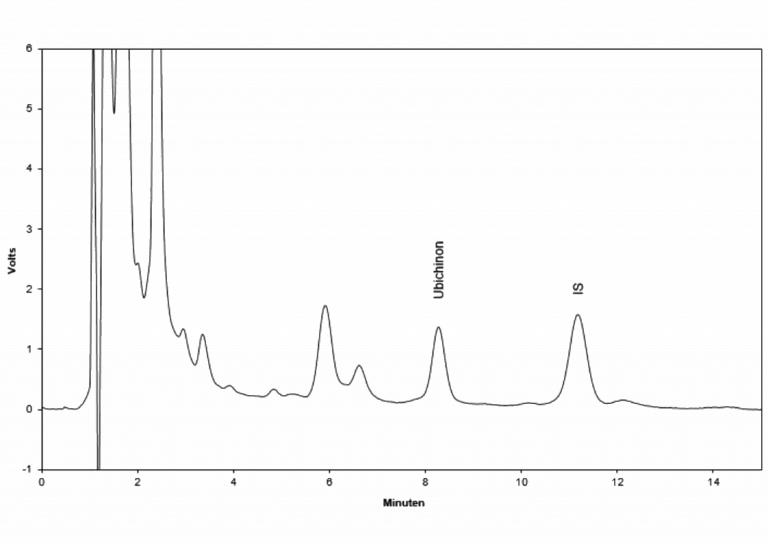Ubiquinone / Coenzyme Q10
Ubiquinone is a coenzyme of every cell in the body. Ubiquinone is built up by a chinonic ring and an isoprenic sidechain. Ubiquinone has two different pysiological functions. During the oxidative phosphorylation it is the less abundant and therefore the speed controlling redox system. Beside this it has a high amount of carbon doublebonds and therefore a higher potential of reduction than vitamin C or vitamin E. Thereby it is the first line of defense against free radicals. Even when other antioxidants are inert coenzyme Q10 reacts fast and sensitive against free radicals. Therefore ubiquinone is an optimal stabilizer of the ion channels of the membranes.
A lack of ubiquinone will lead to a reduced energy metabolism and a reduced antioxidative capacity.
Technical data
Sample Serum, plasma, EDTA-blood
Sample volume 200 µl
Detector UV 275 nm
Method isocratic
Determinations 100
Ordering Information
IC1700 Testkit
IC1700ko Controls (2 level each 250 µl lyoph.)
IC1700rp HPLC column

Principle of the method
For the determination of ubiquinone (coenzyme Q10) a precipitation step which removes high molecular substances is performed first. At the same time the internal standard is added. After centrifugation the supernatant is transferred to the organic phase of an extraction solution. The organic solvent is evaporated, the sample is resuspended in ethanol p.A. and injected into the HPLC system.
The isocratic separation at 30°C lasts 15 minutes. The chromatograms are recorded by a UV-detector. The quantification is performed with the delivered plasma calibrator; the concentration is calculated by the “internal standard method”.